The Meiji Restoration and Japanese Historiography
The Black Ships
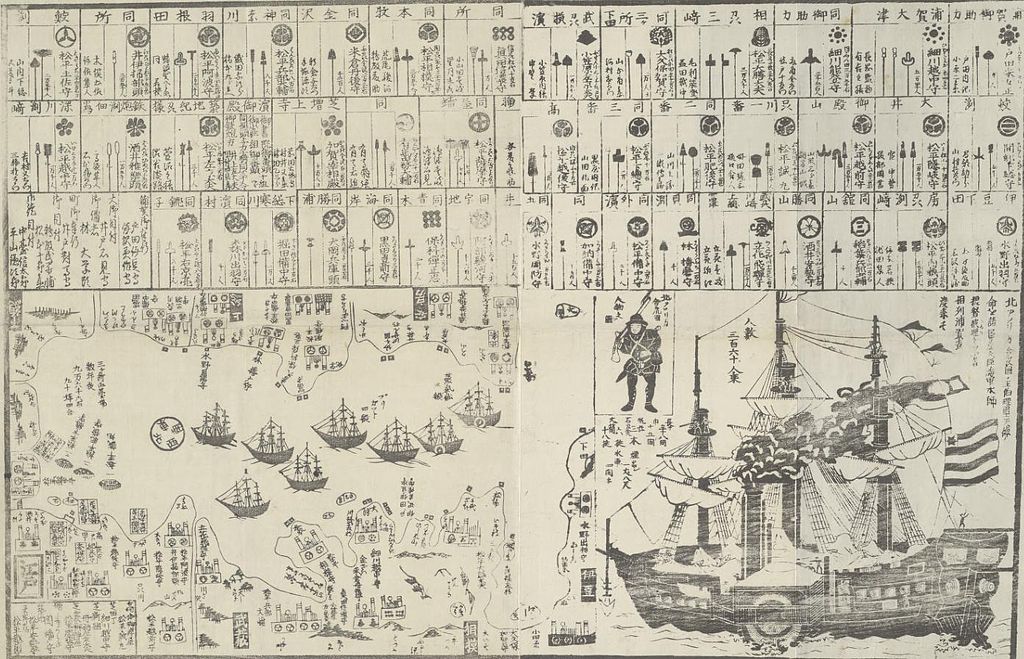
In 1853, four U.S. Navy ships, commanded by Commodore Matthew Perry, entered Edo Bay. Perry’s orders were to demand that Japan end its 200 year old policy of global isolation, known as Sakoku, and open itself to American trade. This act of gunboat diplomacy would not only have a profound impact on Japan, but on the entire world. In ten years, the Tokugawa Shogunate would fall, and the Emperor, for centuries merely a figurehead, would be reestablished as the center of Japanese polity. In fifty years, the country would have so rapidly modernizied, adapting to western ways of education, medicine, and war, that they were primed to to challenge the West for colonial domininace of Asia. Throughout this process, the way Japanese scholars viewed their past went through sezimic shifts. Japan, and its history now had to be viewed through the lens of a larger world. Western methods of historiography would be studied, and implemented, to form the identity of a Japanese nation state.
History in the Tokugawa Period
Tokugawa Ieyasu’s victory at the Battle of Sekigahara in 1600 led to an era of political stability Japan had not seen for centuries. While the Yamato Dynasty, Japan’s Imperial Family, had, in theory, ruled uninterruptedly since the the 7th century, they had been little more than figureheads since the 12th century, when military rulers, known as shoguns, rose to power. Brief periods of stability would give way to eras of civil strife. Military leaders, such as Oda Nobunaga, would come close to unifying the land, but ultimately fall short. The Tokugawa would succeed where all others had failed. This period of peace and prosperity would see a flourishing of culture, commerce, literature and the arts.
The writing of history was no exception. The Tokugawa took great in history, funding various effort to compile the recent past. Though while the output may have increased, the philosophy and methodology of history had changed little since the creation of Japan’s earliest historical texts, the Kokiji, and the Nihon Shoki in the 8th century. History was still written under the authority of the government, with the primary purpose to justify their rule. It was still being written in Chinese, the prefered language of male scholars, and used the Confucian methodology of evidence gathering. It was only in the twilight of the Tokugawa Period, when historians such as Motoori Norinaga and Rai Sanyo, began to produce works that challenged those in power. Motoori’s study of the Kokiji put into question the validity of shogunate rule, which inspired Rai’s own Nihongaishi, a more directly critical take on the Tokugawa. (Borton 493-494)
The Restoration
The Tokugawa’s weak response to the aggresive trade demands of the United States left an opening for a new power stucture to emerge. This occurred in 1866, when the leaders of several feudal domains banded together, not to form their own shogunate, but to “restore” the current emperor to his rightful place of power. They succeeded in their efforts within two years, and the young Emperor Meiji took charge of the country. While in many ways Meiji remained a figurehead, with the rebellion’s leaders still acting as key advisors, this “restoration” of Imperial power had great symbolic meaning. If Japan was to deal with the arrival of the West, it must modernize, but it also must not lose its identity. What better protector of the past than a man whose lineage includes mythical Japanese rulers dating back thousands of years? As Japan moved to shed its isolationist past, it would even more closely hold on to its history.
Fukuzawa Yuichi and Japanese Civilization
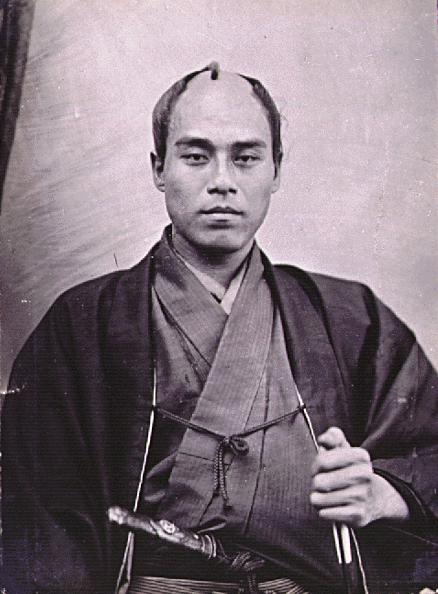
Fukuzawa Yuichi was perhaps Japan’s most famous 19th century philospher, so much so that his face currently resides on the 10,000 yen note. Fukuzawa’s work, which crossed over from the Tokugawa to the Meiji Period, focused on Western learning, and how it could be used to benefit Japan. While much of his focus was on education, he eventually founded the first university in Japan to use western methods, he did engage in the philosphy of history. His work An Outline of a Theory of Civilization, influenced by the work of British historian Henry Thomas Buckle, would similarly focus on history as the story of civilizations (Fukuzawa xix). The final chapters of the book contrast the origins of Western and Japanese civilzations, finding the later presently at a disadvantage. This acceptence of the West’s current “superior” civilization was a prime motivator for Fukuzawa, and the Meiji era as a whole. The West was to be emulated, but only for the advancement of Japanese “civilization.”
The Founding of Historiographical Bureau
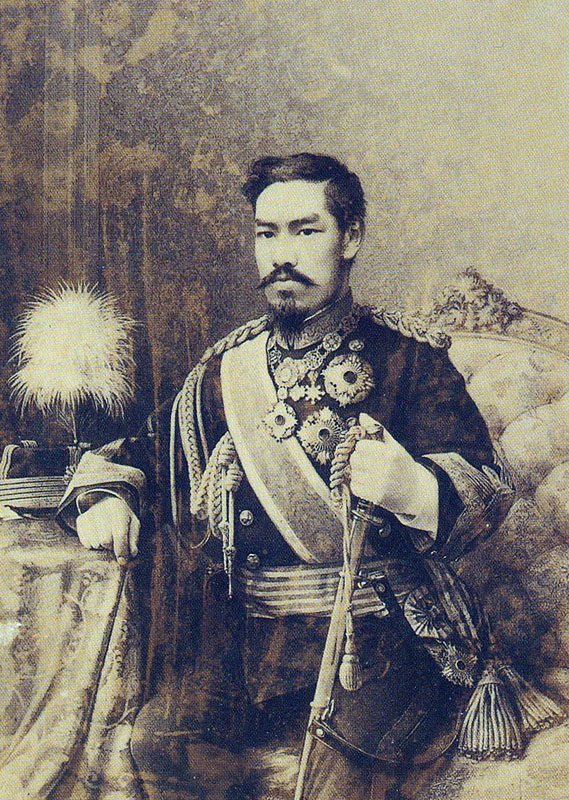
In 1869, at the beginning of the Restoration, the following Imperial rescript was posted:
Historiography is a for ever immortal state ritual (taiten) and a wonderful act of our ancestors. But after the Six National Histories it was interrupted and no longer continued. It is not a great lack! Now the evil of misrule by the warriors since the Kamakura period has been overcome and imperial government has been restored. Therefore we wish that an office of historiography (shikyoku) be established, that the good custom of our ancestors be resumed and that the knowledge and education be spread throughout the land and so we appoint a president. Let us set right the relations between monarch and subject, distinguish clearly between the alien and proper (ka’i naigai) and implant virtue throughout our land. (Mehl 227)
This declaration of the importance of historiography so early in the reign of an new government, reveals the value of history, or more specifically the control of historical narrative, to the legitimacy of rule. Thus the Historical Bureau was founded. The bureau was incorporated into Tokyo Imperial University in 1888, eventually being renamed the Historiographical Institute in 1929, the name in which it functions under today. The early work of these scholars was more in line with archivists than historians, compiling a massive amount of primary source material, which would be collected in works such as the Fuken shiryo. The organization’s deputy director, Shigeno Yasutsugu, was one of Japan’s earliest, and most influential historians. While Shigeno, and other’s working for the Bureau, were well read when it came to the “new” historical methods being developed by Leopold von Ranke, they were still very much ensconced in their Confucian historical tradition. This does not mean that they did not adhere to a primary source-based method of historical study. Shigeno, and fellow important Confucian scholar within the Bureau, Kume Kumitake, “set out to free Japanese history from the myths that dominated the treatmeant of antiquity”, even goings as far as disproving the existance of several famous historical figures. (Jansen 483-484)
History and the State
Kunitake’s elevated status at the Imperial University was short-lived. In 1892, he wrote an article that would immediately cast him out of favor with Imperial authorities. Shinto Is an Outdated Custom of Heaven Worship was a take down of the very state-sponsered religion that the Imperial Household was using to maintain its legitimacy, calling into question their historical descendence from Amaterasu, the sun goddess, and most important figure in Shinto cosmology. While Kunitake was able to able to continue writing, and eventually found work a private university, he was finished at the Historiographical Bureau. That none of his colleagues stood up for him was a sign of things to come, as State Shinto grew in influence in the 20th century.
This would not turn out to be an isolated incident, though the government would prefer the use of soft power over the country’s intellectuals. Often, these historians would be employees of the government itself, such as members of the Historical Bureau, or independently wrapped up in the nationalistic fever of the moment. When the government felt it was important enough, such as a troubling, from the perspective of royal legitimacy, period in the the 14th century where there were two Imperial Households, they would merely dictate what historians were allowed write. (Jansen 486)
Continuity and Disruption
The influence of Western Historiography was most evident in the appearance of Ludwig Riess, a student of Ranke, at Tokyo Imperial University. Riess taught history, and promoted new methods of historical science. While Riess’ work in Japan, which lasted until 1903, was important, it had significantly less impact than Japanese historians’ own transformations of Western historiographical ideas. (Mehl 232) Another German living in Japan, a physican named Erwin Balz, was told by a Japanese student “We have no history” and that “our history begins today” (Jansen 460). This was spirit of te Meiji Restoration. The country would take what the West had to offer, and create a “new” Japan on its own terms.
Heroes of the Past
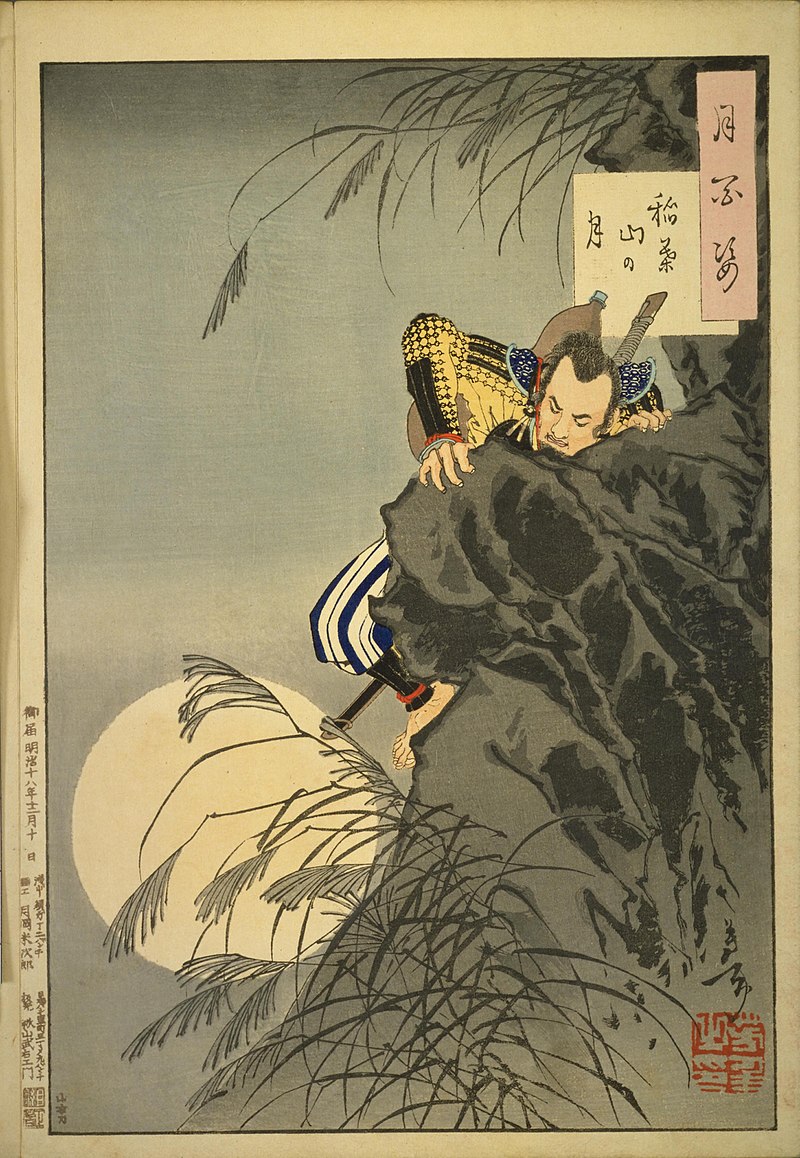
Historians such as Yamaji Aizan worked outside the influence of the Historiographical Bureau, embracing the mythology men like Shigeno sought to debunk. Yamaji’s populistic beliefs led him to promote the idea of invidual agency, and the powerful role of the hero in nation building. These ideas were inspired by the work of Thomas Carlyle, a 19th century Scottish philosopher and historian, who was an early advocate of the Great Man Theory of history. His work, On Heroes, Hero-Worship, and the Heroic in History, was one of many western texts translated into Japanese during the later half of the 19th century. Yamaji embraced these heroic ideals, and wrote embellished biographies of “great men” throughout Japanese history. Powerful shoguns, such as Minamoto Yoritomo, Ashikaga Takauji, and even the founder of the so recently deposed Tokugawa Shogunate, were represented as civilizing heroes. The inclusion of Saigō Takamori, one of the founders of the Restoration, who eventually rejected the westernization of the military, and led the failed Satsuma Rebellion of 1877, reveals how rapidly the mythologizing process was taking place. Yamaji’s advocacy of Japan’s Imperial ambitions led to a unifying of all Japanese heroes, though none had ever fought for the nation state that had emerged from the Restoration. (Karlin 76-77)
Japan on the World’s Stage
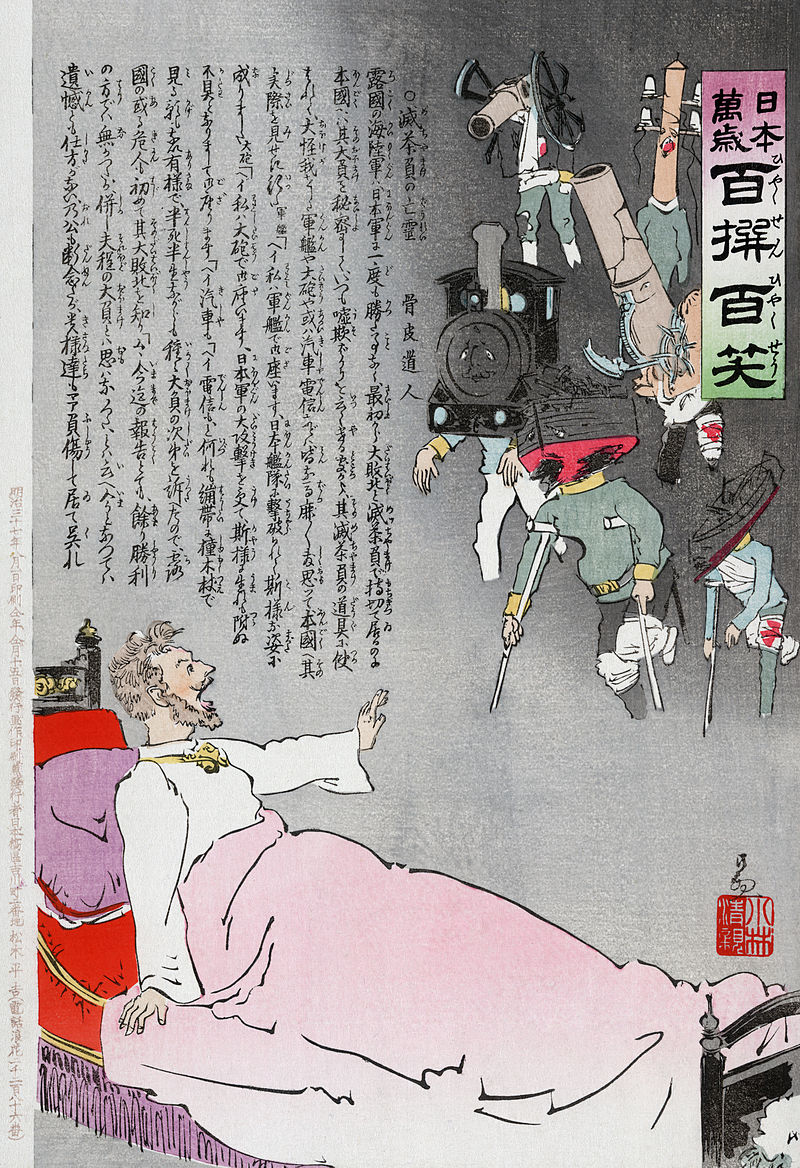
The close of the 19th century, and the dawn of the 20th, would be marked by a series of military victories by the newly Westernized Japanese military. Each held great symbolism, both for both victor and and vanquished. The First Sino-Japanese War of 1894-1895 revealed, in sharp contrast, the success of Japanese modernization efforts, and the failures of the Qing’s. That dynasty, which had ruled for as long as the Tokugawa, would collapse in the following decade, leaving China, the once great hegemon of Asia, fragmented for years to come. Japan stepped into that void, colonizing Korea, Taiwan (then Formosa), Manchuria, and, eventually, the majority of Western colonial holdings in East and Southeast Asia. The first of these colonial powers to fall would be Russia. Their defeat at the hands of the Japanese in 1905, exposed not only their own weakness, but the failing grip of European colonialism. Japan not only took Western technology, but 19th century Western ideas of national identity, born out of historiographical concepts, and formed a new order in the East. While this order would fall apart in 1945, the legacy of devastation it left behind haunts the region to this day.
2067 words.